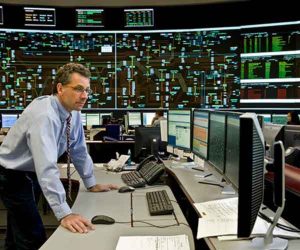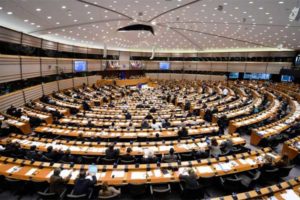- According to a recent report from the Royal Bank of Canada (RBC), a turning point is looming in Canada.
- Ontario, the country's largest population centre and the traditional power engine of Canada's economy, could face crisis mode as soon as 2026.
- For a perspective, look no further than present-day Europe to understand the dangers of energy uncertainty.
According to a recent report from the Royal Bank of Canada (RBC), there is a significant turning point looming in Canada—one which threatens the simple things we all take for granted every day.
Canada’s energy production is expected to increase by as much as 50% over the next ten years. Accommodating this rapid growth will become a significant challenge—especially while simultaneously maintaining our existing national commitment to reach net zero emissions by 2050.
According to the report, taking action can’t wait for some provinces.

Ontario’s Independent Electricity System Operator (IESO) control room; from where the province’s electricity market and system are managed in real-time. The IESO directs the flow of electricity over electrical grid lines, while transmission companies own, operate and maintain the lines and towers. (IESO)
The article warns that Ontario, the country’s largest population centre and the traditional power engine of Canada’s economy, could face crisis mode as soon as 2026.
For a perspective, look no further than present-day Europe to understand the dangers of energy uncertainty.
The aftermath of the invasion of Ukraine has made it abundantly clear that dependence on unstable external forces to keep one’s economy running—in this case, Russian gas—is a risky move, in that it leaves nations vulnerable to a whole host of problems.
In the absence of Russian gas, which so many countries had come to depend on, European nations have struggled to keep things moving.
Furthermore, the RBC report observes, “Drought has led to low hydro reservoirs in usually wet parts of Norway, and record heat waves have lowered wind power availability and warmed rivers so much that nuclear plants can’t use them to cool reactors without environmental waivers.” The takeaway is that weather conditions and the effects of climate change also contributing to energy uncertainty.
Due to the necessary efforts of Western countries to adapt their economies towards sustainability via broad regulations, these problems have inadvertently become exacerbated and difficult to overcome. This is because, in addressing one very serious problem, they failed to recognize that they were falling prey to another.
The challenges we face do not exist in a vacuum.
The need for environmental sustainability is here to stay. There is no future in which our economies are not modifying some aspects of what they do to accommodate new requirements in this area. This means governments must fit those requirements into a functioning, stable, and comprehensive broader economic context.
Up to this point, many countries have approached the net zero question in isolation, and Europe is now suffering the consequences. Had the EU more effectively factored broader economic visions and plans into their environmental sustainability approach, it could have been in a better position to handle the Russian threat without the struggles they now face.

The European Parliament is the legislative branch of the European Union and one of its seven institutions. Together with the Council of the European Union, it adopts European legislation, normally on a proposal from the European Commission.
One way in which this could have been possible was if the EU had proactively taken steps to limit the potential risks indirectly caused by these changes (such as their dependence on Russia for energy needs).
Hopefully, future Canadians won’t have a war to worry about—but that won’t stop shortages and other emerging concerns from wreaking havoc on the supply chains that we depend on for our daily needs.
What can be done, knowing what lies ahead under the current circumstances?
The first thing our leaders should do is seriously weigh and consider the specific recommendations discussed in the report—including shifting some of their focus to conservation, investing significantly in hydro and nuclear energy, expanding Canada’s electricity system, reducing dependence on batteries, and expanding our utilization of solar and wind technologies.
Next, Canada should upgrade its infrastructure across the country to allow for carbon-neutral energy independence and position itself to remain competitive and lead the world as an energy supplier and be a model for sustainable growth policies.
Finally, Canada should take this as an opportunity to reevaluate the bigger picture of how it is addressing its plans for a sustainable future. Reaching net zero continues to be an important priority—but causing unnecessary hardship for Canadians along the way can be avoided by acting now.
Canada’s government must learn from the current situation Europe faces.
It would be wise to see it as a warning and an opportunity to improve the scope and pace of Canada’s long-term energy plans. The time to make these decisions and act is now—not when it’s too late.















Comments